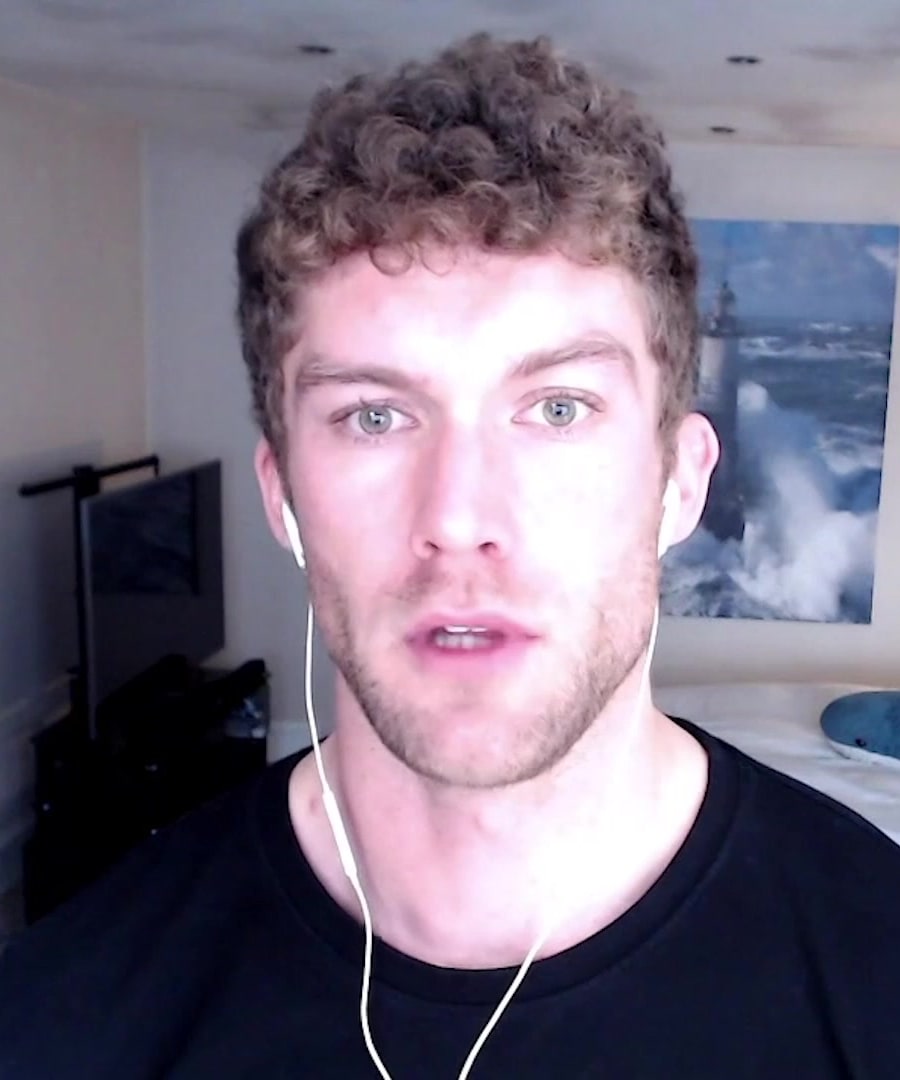nassim taleb
Sources:
Nassim Nicholas Taleb is a Lebanese-American essayist, mathematical statistician, and former options trader. He is renowned for his contributions to the fields of randomness, probability, and uncertainty, and he is the author of influential works such as "Antifragile: Things That Gain from Disorder" and "The Black Swan." Taleb's theories explore how disorder and uncertainties can benefit individuals and systems.
You can find him sharing his insights on the
RELATED QUESTIONSWhat are Taleb's main theories?
Sources:
Nassim Nicholas Taleb is known for several key theories that revolve around the concepts of randomness, risk, and uncertainty in systems. Here are his main theories:
-
Skin in the Game: Taleb emphasizes the importance of having a stake in the outcome of one's actions. This theory advocates that people who make decisions should face the consequences of their decisions, which leads to more responsible and effective actions [1].
-
Black Swan Theory: He describes 'Black Swans' as highly improbable events with massive impacts. Taleb argues that our inability to predict black swan events makes us vulnerable and thus we should build robustness against negative events that are hard to predict [2].
-
Antifragility: This theory extends the idea of robustness, defining 'antifragile' systems as those that benefit from shocks and stresses. Antifragility is about thriving and growing when exposed to volatility, randomness, and disorder [2].
-
Rethinking Probabilities: Taleb argues against the common reliance on the exactness of probabilities in the real world. He suggests that small probabilities are essentially uncomputable and advocates for more pragmatic approaches based on experience and empirical evidence [3].
-
Ethics of Risk and the Asymmetry of Information: He discusses the idea that in complex systems, information asymmetry is rampant, leading to ethical consequences particularly in fields like finance and medicine, where the lack of transparency causes significant systemic risks [1].
Each of these theories is connected by Taleb's skepticism of overreliance on theoretical models in understanding real-world phenomena and his advocacy for more empiricism and practical, experience-based decision-making.
RELATED QUESTIONS-
Can you explain Antifragility in detail?
Sources:
Nassim Nicholas Taleb explains antifragility using diverse examples, such as lung ventilators, temperature variations, and DNA replication. Antifragility refers to systems, organisms, or processes that benefit or grow from shocks, randomness, and stressors. Here are some key insights from Taleb about antifragility:
-
Non-Linear Responses: Taleb uses the example of lung ventilators to highlight that an inconsistent dosage (like 50% at one minute, 150% the next) is more beneficial than a steady 100% dosage. This non-linearity is a feature of antifragile systems which thrive under variable conditions, as opposed to fragile ones that fail under stress.
-
Exposure to Volatility: Applying the concept to everyday situations, Taleb discusses how exposure to variable temperatures might be more beneficial for health compared to a constant average temperature. This variability introduces minor stressors that stimulate adaptation and improvement, reflecting antifragility.
-
Evolution and Randomness: Taleb relates antifragility to evolutionary processes, where random mutations in DNA, which occur during replication, can introduce beneficial traits. Systems that benefit from randomness and errors exhibit antifragility because these traits can lead to significant evolutionary advantages.
-
Thresholds of Resilience: While discussing the concept, Taleb warns of the limits to this pattern—too much variability can be detrimental, illustrating the importance of finding a balance within the antifragile domain.
-
Local Antifragility: Taleb introduces the notion of 'local antifragility,' where certain conditions or contexts may allow systems to benefit from disorder. This localized nature of antifragility enables systems to leverage specific environmental factors to their advantage.
Taleb's discussion of antifragility reveals a complex interaction between stress, variability, and improvement, highlighting that robustness and resilience are not merely about resisting change but about using it to foster growth and improvement [1].
RELATED QUESTIONS-
How is antifragility applied in business?
Sources:
Nassim Taleb articulates the application of antifragility in business, emphasizing embracing variability and the inevitable failures that come with it as a path towards robustness. In a discussion on the , he specifically highlights businesses like consulting and pharmaceuticals as examples where variability in income and beneficial side effects from mistakes can lead to significant gains and ultimately build resilience in challenging environments.
-
Consulting: Taleb explains that in businesses such as consulting, income variability acts as a stressor. Professionals in this field experience different financial situations regularly, which, if navigated successfully, indicate an adaptability and resilience inherent to antifragility.
-
Pharmaceuticals: He points out that in pharmaceuticals, a mistake in drug development can unexpectedly lead to a beneficial side effect, citing Viagra as an example. This kind of serendipity exemplifies antifragility where errors lead to unexpected but beneficial outcomes.
-
Restaurant Business: The discussion also covers the restaurant industry. Restaurants must be able to fail and close to maintain the overall health of the industry, suggesting that individual failure can contribute to systemic health and dynamism. This fragility at the individual level is crucial for the system’s antifragility, meaning new restaurants can start quickly after others fail.
In summary, Taleb suggests that antifragility in business involves a culture of trial and error, learning from failures, and embracing systems that gain from occasional shocks and stressors. These principles help businesses not only to survive but thrive by turning potential drawbacks into advantages [1].
RELATED QUESTIONS-
How can businesses implement antifragile strategies?
Sources:
To implement antifragile strategies in business, companies can adopt several practices as outlined by Nassim Taleb and discussed in various podcasts. Here are some key strategies:
-
Embrace Variability and Failures: Taleb stresses the importance of embracing failures and variability as these factors drive improvement and resilience. View every challenge as an opportunity to learn and adapt. Constantly exposing oneself to moderate risks can help businesses learn and evolve [1].
-
Trial and Error: Implementing a culture of trial and error is crucial. This approach encourages innovation through iterative learning from mistakes. The pharmaceutical industry exemplifies this, where unintended discoveries (like Viagra from a hypertension medication) occur due to "happy accidents" in research [1].
-
Redundancies and Reserves: Creating redundancies, like maintaining cash reserves or backup systems, can enhance a business’s resilience. This helps in managing unexpected situations without disrupting business operations [2].
-
Focus on Systems, Not Just Individuals: Taleb highlights that sometimes the survival or failure of individual elements is necessary for the overall health of the system. For instance, in the restaurant business, individual failures can lead to a more robust and innovative industry as new ventures emerge from old ones [1].
-
Convex Exposures: Businesses should aim to create situations where they can benefit disproportionately from positive events while minimizing losses from negative ones. This can involve strategic bets on high-reward projects while keeping potential losses manageable [3].
Incorporating these strategies can help businesses not just to survive but thrive in unpredictability, turning potential setbacks into opportunities for growth and innovation.
RELATED QUESTIONS-
What other concepts has Taleb introduced?
Sources:
Nassim Taleb has introduced several influential concepts in addition to antifragility. Here are some notable ones:
-
Convexity: Taleb discusses the importance of understanding convexity effects, especially in fields like medicine and finance. Convexity deals with how non-linear responses or outcomes depend critically on the magnitude of changes or inputs, rather than just the direction [1].
-
Skin in the Game: This concept refers to the idea that one should have a stake in the outcome of their actions. It emphasizes accountability and the impacts of transferring risks to others. This principle applies across various domains from finance to personal decisions [2].
-
Modeling Flaws in Economics: He critiques standard economic models for their oversimplification and the dangers of applying naive statistical models to complex, fat-tailed data. This is particularly relevant in his discussions on the misapplication of linear regression and correlation in economics [3].
-
Nation vs. State: Taleb explores the distinctions between a nation (often ethnically defined) and a state (an administrative unit), highlighting the historical and social complexity in the relations between the two. This distinction is crucial for understanding the construction and impact of modern states [4].
These concepts illustrate Taleb’s broad influence across various fields and his commitment to challenging traditional assumptions and models.
RELATED QUESTIONS-
What is skin in the game?
Sources:
"Skin in the game" is a concept popularized by Nassim Nicholas Taleb that primarily focuses on having a personal stake or risk involved when making a decision or giving advice. It's about aligning incentives between decision makers and those affected by the decisions. If people stand to lose something of value, they are likely to act more responsibly.
Taleb clarifies that "skin in the game" is not just an incentive but often acts as a disincentive. This is because it doesn't merely encourage doing the right thing but also actively deters doing the wrong thing due to potential personal loss. Thus, it serves as a filter, removing individuals who do not understand or act according to their self-interest in situations that require careful judgment [1].
RELATED QUESTIONSCan you provide examples of skin in the game?
Sources:
Here are some examples of "skin in the game":
-
Business Partnerships: Chris Williamson uses the "skin in the game" concept in his businesses. For instance, his video editor takes 50% of all YouTube revenue. This incentivizes the editor since his earnings are directly linked to the success of the projects [1].
-
Risk and Accountability: Nassim Taleb discusses how traditional societies used to operate on the "skin in the game" principle. For example, Roman emperors and generals had to take significant risks. This system ensured that only those who were willing to risk their lives could lead or make crucial decisions [2].
-
Financial Sector: Taleb also emphasizes the imbalance in modern corporate and banking sectors, where executives may receive bonuses and benefits even when their companies perform poorly, effectively having upside gains without corresponding risks [3].
-
Historical Context: The builder in Hammurabi's Code had ultimate accountability, implying that the builder would suffer death if a structure they built collapsed, ensuring the highest standards of safety and honesty [4].
These examples reflect various domains where the presence or absence of "skin in the game" significantly influences outcomes and behaviors.
RELATED QUESTIONS-
how to develop a strong sense of self-efficacy?
Sources:
Developing a strong sense of self-efficacy involves several key strategies:
-
Mastery Experiences: Engage in activities that challenge you, and learn from each experience. Every successful experience reinforces your belief in your ability to handle similar situations in the future [1].
-
Vicarious Experience (Modeling): Observe others performing tasks that you aspire to accomplish. Seeing similar individuals succeed by sustained effort can strengthen your beliefs in your capabilities [2].
-
Verbal Persuasion: Encouraging and positive dialogue from others, including coaches, mentors, or peers, can enhance your belief in your ability to succeed. Likewise, positive self-talk is crucial [2].
-
Physiological and Affective States: Recognize and manage your physiological and emotional states. Understanding how your body and emotions react during different situations can influence how you perceive your self-efficacy [3].
-
Choose Your Attitude: Acknowledge that you always have the freedom to choose your response to any situation. This choice is central in Viktor Frankl's concept of finding meaning, emphasizing that our attitudes in unavoidable suffering can define our experiences and responses [1].
By systematically applying these strategies, you can gradually build and strengthen your self-efficacy. This enhances your ability to tackle new challenges and persevere through difficulties.
RELATED QUESTIONS-
Can you provide tips for creating mastery experiences?
Sources:
Creating mastery experiences, which are crucial for building self-efficacy, involves several effective strategies:
-
Set Achievable Goals: Begin with simpler tasks that you can successfully complete and gradually increase the difficulty. Seeing your progress through these smaller victories builds confidence and skills [1].
-
Persistent Effort and Learning: Emulate Michael Jordan's approach by treating every practice or task as if you’re proving your worth. Maintain high energy and purpose in your endeavors, not just to show your skills but to continually elevate them [2].
-
Feedback and Reflection: Regularly assess your performance and reflect on what you learned from each experience, not just whether you succeeded or failed. This helps refine your approach and reinforces learning [2].
-
Embrace Challenges as Opportunities: Shift your mindset to view challenges not as obstacles but as opportunities to develop and demonstrate your skills. This attitude helps you engage more deeply and persistently with your tasks [1].
These strategies align deeply with the principles of self-efficacy, helping to ensure that each mastery experience is both meaningful and growth-oriented.
RELATED QUESTIONS-
How can I find effective role models?
Sources:
To find effective role models, it’s important to follow these steps:
-
Identify Qualities and Successes: Reflect on individuals whose qualities or successes you admire. This helps in understanding what characteristics or achievements you value and wish to emulate [1].
-
Diverse Sources: Role models can come from anywhere—historical figures, leaders in your field, authors, athletes, or even characters from books or movies. Their real-life presence is not as critical as the qualities they embody [2].
-
Assessment of Influence: Consider how these individuals influence your thinking and behavior, whether positively or negatively. Sometimes understanding what you don’t want to emulate is as crucial as knowing what you do [1].
-
Community and Online Platforms: Leverage online communities and platforms to find contemporary influences. Social media and professional networks are valuable resources for connecting with potential role models or mentors [3].
-
Continuous Evaluation: Your needs and aspirations will evolve; thus, periodically re-evaluate the role models you follow to ensure they align with your current values and goals [1].
These steps provide a practical framework for identifying role models that can positively influence your personal and professional growth.
RELATED QUESTIONS-





